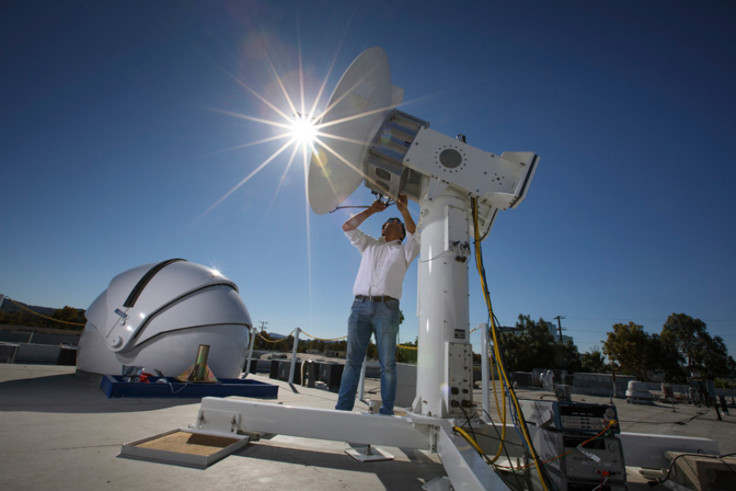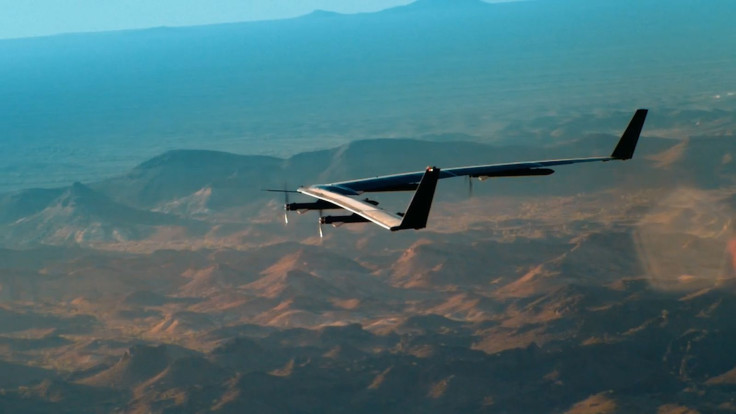Facebook achieves ultra-fast 20Gbps millimetre wave wireless data transmission over 13km
Facebook researchers demonstrate breakthrough wireless data speeds of 20Gbps over millimetre wave in the US.

Facebook has just set a new world record by succeeding in transmitting data wirelessly at the speed of 20Gbps over a distance of 13km between California and Malibu, which is essentially enough to steam almost 1,000 ultra high definition videos at the same time, and much faster than any data transmission method we have today.
Researchers and engineers from Facebook's Connectivity Lab demonstrated the speeds using custom-built components including a transmitter and receiver that only used a total power consumption of 105 watts and a bandwidth of 2GHz, which resulted in a total spectral efficiency of 9.8 bits per second per Hertz.
At the moment, it is very difficult to transmit large amounts of data over a great distance due to the radio signals weakening as they get further away from the transmitter, but much bigger bandwidths are available in the 30GHz to 300GHz frequency bands, which are known as millimetre waves.
Millimetre waves could help Facebook connect the world
Millimetre waves are found in the spectrum between microwaves, which take up the 1GHz to 30GHz bands, and infrared waves, which are sometimes known as extremely high frequency (EHF). EHF can only be used over short distances such as a few kilometres due to high free space loss and atmospheric absorption.
However, more and more mobile operators are becoming interested in millimetre waves as they seek to create faster 4G LTE networks and beat congestion from too many users accessing the internet on their phones at one time.
Facebook is interested in millimetre wave technology because it wants to use it to help with its mission to provide free internet connectivity in remote areas of the world. For instance, using millimetre wave would enable it to carry traffic to and from its open source wireless access platform OpenCellular, which is designed to act as an all-in-one solution, from a standalone network-in-a-box to a wireless access point.
Then there is Aquila, a solar-powered unmanned aerial vehicle (UAV) that is meant to fly at high altitudes and stay airborne for 90 days at a time in order to beam wireless broadband coverage over an area 60 miles wide.
Other millimetre wave records

Prior to Facebook's demonstration, the world record for millimetre wave was held by German scientists from University of Stuttgart, the Institut für Hochfrequenztechnik und Elektronik (IHE) from KIT, Radiometer Physics GmbH and the Fraunhofer Institute for Applied Solid State Physics IAF, who succeeded in transmitting data at the speed of 6GB/s over a distance of 37km in May.
There are also researchers who have set records for achieving the highest speeds of data transmission over millimetre wave ever achieved, such as electrical engineers from the University of Southern California Viterbi School of Engineering, who twisted radio beams in order to transmit data at a speed of 32Gbps, but the distance was only 2.5m across a laboratory.
Japanese researchers from Hiroshima University, Panasonic and Japan's National Institute of Information and Communications Technology are also focusing on unused parts of the radio spectrum, but rather than millimetre waves, they are looking at the submillimetre terahertz 275-305GHz frequency range. In February 2016 they managed to achieve 100Gbps over multiple data channels that each sent out 10Gbps signals.
© Copyright IBTimes 2025. All rights reserved.






















